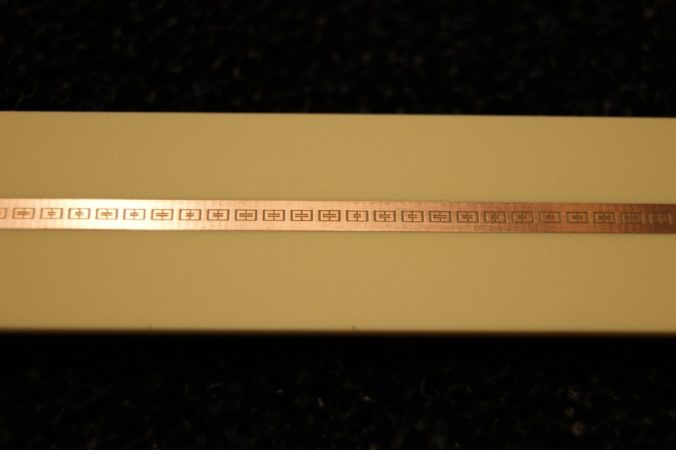A smarter scan
Scientists introduce a cheap and smart new device that gathers data in a flash

A security scan has become as common to air travel as tickets, luggage and delays. Travelers line up, remove purses and belts, fill plastic bins with their belongings, and march slowly toward the full-body scanner. But that screening may one day speed up dramatically, thanks to the invention of a new system.
It relies on microwaves to image objects. Microwaves are a form of electromagnetic radiation — types of energy that travel through space as a wave. Electromagnetic radiation includes visible light, which can be seen with the naked eye. It also includes several types of energy, such as microwaves, that aren’t visible with the naked eye.
In January, scientists at Duke University and elsewhere reported creating a new device that could help make smarter, faster and cheaper scanning machines. So far, the new device has been tested only in the lab. But if it works outside the lab, too, it could find use in a host of new products.
At airports, the new device could be used in machines that scan people for guns, knives or other would-be weapons. A technique similar to the one used by the researchers could be applied to other scanners, like those doctors use to peer into the body. This could reduce the amount of time patients spend in a scanner — and the cost of such procedures. The device’s designers even envision police officers wearing vests embedded with the new technology to help identify a hidden weapon.
The new device is simple; it has no moving parts. It consists of a narrow strip of copper into which several precise patterns are cut. Some of the patterns look like loops. Others look like spirals. Some look like squares. Each pattern puncturing the strip works a bit like the aperture that lets light into a camera.
A scanner based on the new device would beam microwaves of different wavelengths into an area. Some waves would hit reflective objects, such as metal, and immediately bounce back to the copper strip. By using microwaves of different wavelengths, their reflections will hit the strip in different places. The pattern of cutouts on the copper filters the different wavelengths as they approach from different angles.
Sensors behind the holes cut into the strip record the incoming waves. Using mathematics cleverly, scientists can interpret what the sensor sees. From this they create an image. Reflective materials detected by the scanner may have been hidden under clothes or behind walls.
Instead of requiring expensive technology, a scanner based on the device could use existing materials (like copper) in a smarter way. Called metamaterials, these become useful based on how they’re designed, not what they’re made of.
“This definitely represents a less expensive and potentially faster alternative to current imaging methods,” Kevin Kelly told Science News. Kelly is a technology specialist at Rice University in Houston. He did not work on the new device.
Metamaterials have been used to build the world’s first invisibility cloaks, which can hide objects in plain sight. (But only very small objects, and only when viewed with certain types of energy waves.) In those devices, the metamaterials guide light waves around an object, so they’re neither reflected nor absorbed.
Sir John Pendry pioneered the use of metamaterials for cloaking. This physicist calls the new device a “clever” way to get information quickly from the environment. “It’s an extremely exciting development.”
Power Words
aperture A hole or opening that lets light into the lens of a camera. That light will ultimately be used to create an image on film or a digital recording material.
perforate To make one or more holes through a surface. Those holes are known as perforations. They can be relatively big, like the holes in a belt. They could be the fork holes that cooks pierce into the top of a piecrust so that steam can escape during baking.
metamaterial Lab-built materials that develop particularly desirable properties based on the way that they are built, rather than what they’re made from. They have qualities not found in the natural world.
physics The branch of science that deals with matter and energy.
electromagnetic radiation The emission of energy that travels as a wave.
microwaves An electromagnetic wave with a wavelength shorter than that of normal radio waves but longer than those of infrared radiation (heat) and of visible light.







